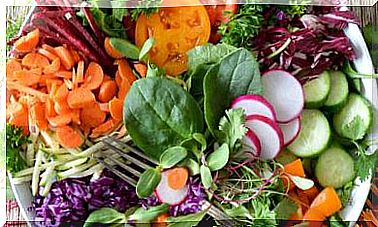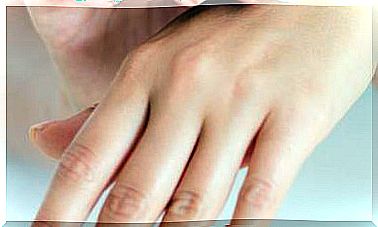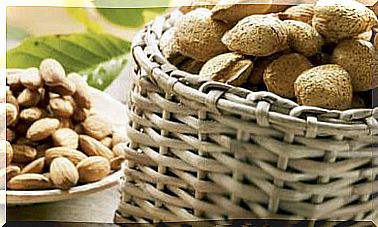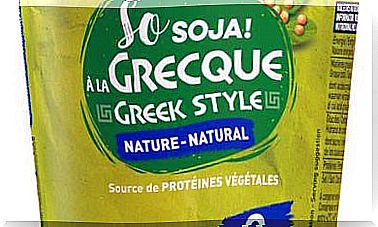“Yoga For Mothers And Babies Strengthens The Mother-child Bond”
Learn about the physical and emotional benefits of this practice.

Gabriela Nanni has been a yoga teacher for 12 years, trained in Ashtanga Vinyasa Yoga, Yin Yoga, Prana Flow Yoga and Yoga for pregnant women. Brazilian of Italian descent and living in Barcelona, Nanni is a member of Espacio de Terapias, a multidisciplinary health project dedicated to motherhood and parenting, emotional support, psychotherapies and body and natural therapies, among other approaches. All with a humanistic and integrative vision.
In a talk we had in Barcelona the past few days, she told us that from June 21 to 24 she will coordinate a yoga course for mothers and babies taught by Anne Sobotta, a French woman based in Brazil who specializes in this approach, who also works as a doula and perinatal educator and somatic therapies specialist.
The course is aimed at professionals dedicated to assisting women during childbirth, postpartum and early childhood, as well as yoga professionals and all mothers interested in going with their babies.
Likewise, a week later, on the 29th and 30th, Espacio de Terapias will bring Janet Balaskas to Spain for the first time , creator of the Active Childbirth concept, which revolutionized the natural birth scene in the 1980s. Balaskas will give a workshop about this theme. Both events will take place at Espacio de Yoga.
“The class is a place where it is possible to lose fear”
During the interview, Gabriela explained to us the physical and emotional benefits of these practices for women during such an important time as childbirth and postpartum.
“What is a yoga class for mothers and babies like?”
—The class tries to be a space in which that special moment that is the puerperium is respected. It is important to listen to and take care of moms. There is a moment designed for their physical well-being, in which we try to convey to them that they do not have to be in a hurry to return to the socially imposed model of women. We help them with different asanas to prevent and improve common postpartum problems, such as back pain or abdominal diastasis. Some movements are practiced alone and others with the child, integrating it in a playful way. But above all there are proposals for relaxation and care is done with a systemic vision designed for the mother-baby dyad .
“What about caring for the child?”
-The support the baby is designed so you can go through the major stages of development smoothly and focuses on massage, which is a tool for mothers to touch their babies in a pleasant and safe. They are the best therapists for their little ones and that is why massage becomes therapeutic for both of them.
—What do moms who go to yoga classes with their babies say? What improvements do they experience?
—For many mothers, class is a place where it is possible to lose fear: of putting the baby on his stomach, of not knowing how to manage crying, of not having enough milk, of not corresponding to an ideal, of not getting … others it is time to relax deeply, since they cannot do it at home because they may have more children. It is where they also learn to do exercises to relieve postpartum pain and to solve issues related to the development of the baby.
Yoga for mothers and babies, in addition to being therapeutic, reinforces the emotional bond between mother and child. On the other hand, sharing the experience with other women is very important because postpartum is a very lonely time for women.
“The class also becomes a space for exchange in which it is possible to express doubts and fears without being judged.”
—Many babies suffer from colic or sleep disturbances. Is this practice effective in alleviating these problems?
—Yes, because it is built with a systemic look and not like “my baby has a problem.” The massage contributes to the production of hormones of the well-being of the baby, with which there is an improvement of the sleep. In addition, some of the massage techniques and yoga movements are designed to improve colic or remove mucus, among other issues.
Another interesting thing is that during class we usually put the baby on his stomach, calmly and without fear of any danger, controlling him at all times. This is an important posture for him, to strengthen his back and stimulate his organs. Today it is obvious because of the fear of sudden death but it is interesting that at some point in the day we offer the child this possibility. In addition, it is very effective in fighting colic.
—The hands of the mother through therapeutic massage are an invitation to life …
-Of course. Keep in mind that labor, during which the fetus is pushed into the birth canal through uterine contractions, is the first massage the baby receives. In this process, your peripheral nervous system and major organs are stimulated. The massages that we subsequently perform on babies are a way to lengthen this sensation and to ensure that the newborn does not accumulate areas of tension or stiffness in the muscles and joints, so that they can relax physically and emotionally.
But, in addition, touch is the first sense that develops in the baby and through touch it is possible to stimulate the rest of the senses: taste, hearing, vision, balance (massage stimulates the vestibular system, which allows balancing the body in relation to the weight of gravity) and proprioception (massage facilitates awareness of one’s own body position in space). But above all, touching our son, looking at him, kissing him, giving him affection and talking to him during the massage gives him the security and confidence he needs to grow up happy.
Bringing back the power of childbirth to women
Regarding Janet Balaskas’ workshop on active childbirth, Gabriela Nanni explains that as long as a woman is in good health and the delivery is low risk, it is not necessary to be in a hospital environment to give birth.
Janet Balaskas has been proposing active childbirth since the 80s, which is nothing more than helping women to take control of their birth and recover the tradition of natural birth but in a modern context, in a cozy and warm environment, calm, in dim light, where the woman has privacy without feeling observed and is accompanied by a midwife to whom she can turn with guarantee at all times.
The woman must be able to move freely to be able to alternate during labor, standing, kneeling, squatting, bending forward, or if you prefer, lying on the bed, but on her side, not lying on her back, since this prevents him from moving at will.
Respecting the physiology of childbirth, there is also a greater release of hormones (oxytocin and endorphins) that allow the mother to better deal with pain. During the workshop Balaskas will explain, among others, relaxation techniques (massages, acupressure, touch …), as well as breathing and sound.









